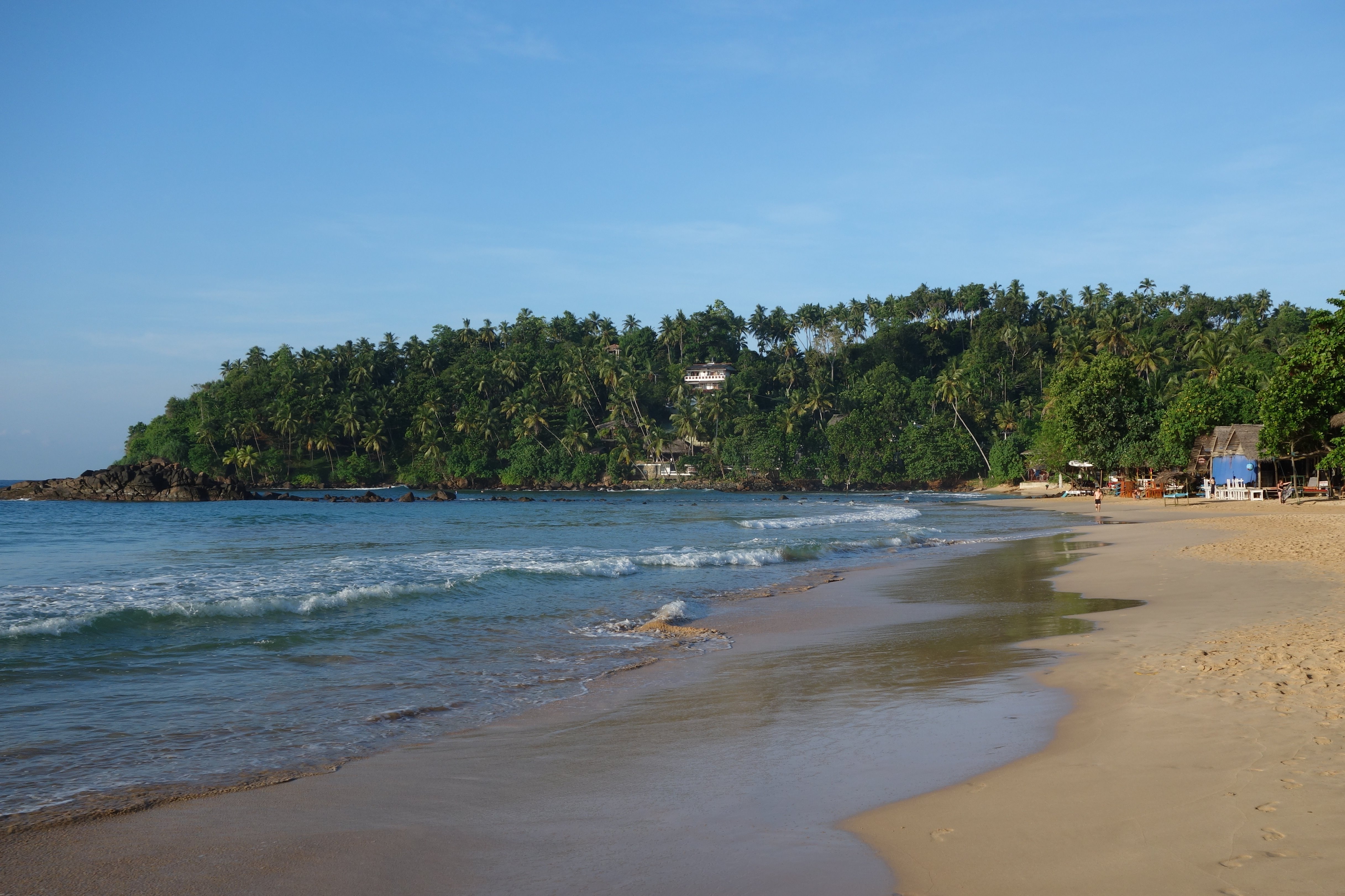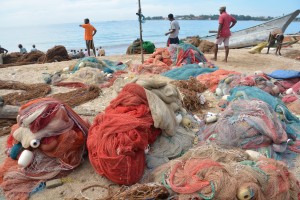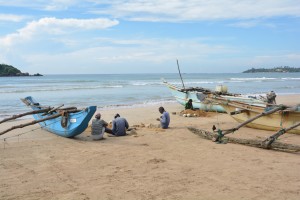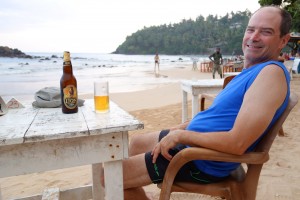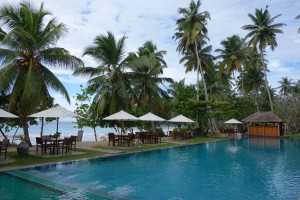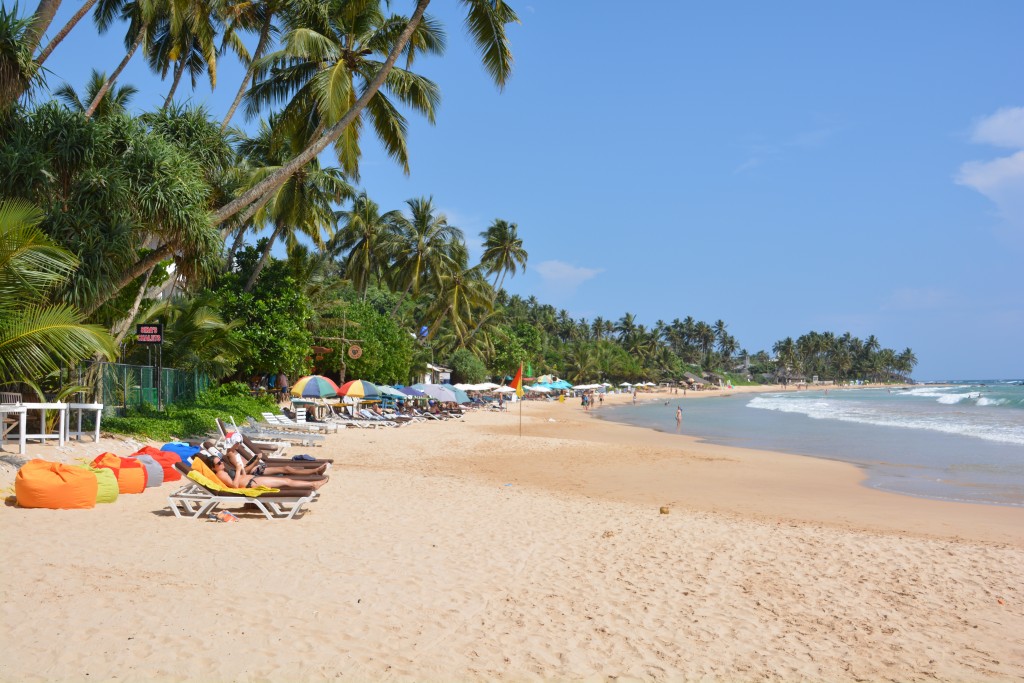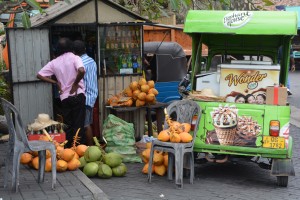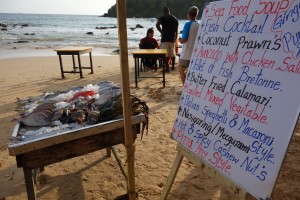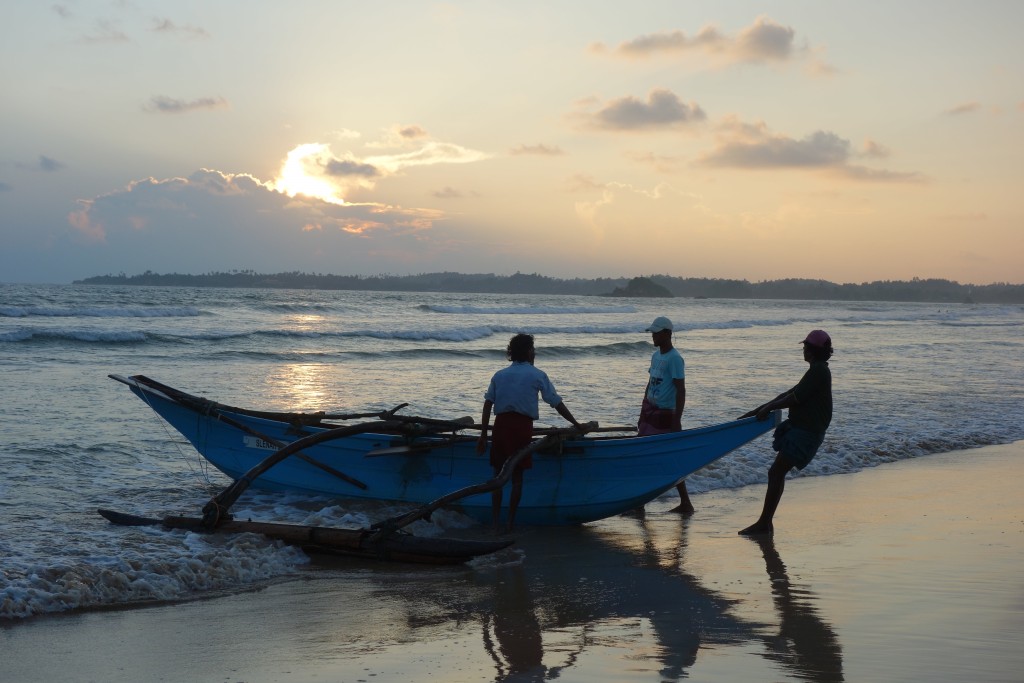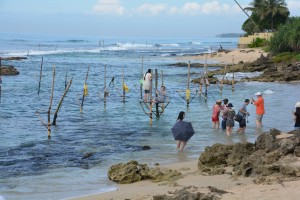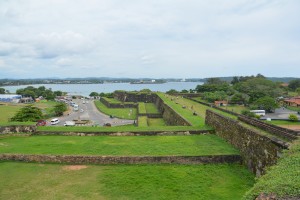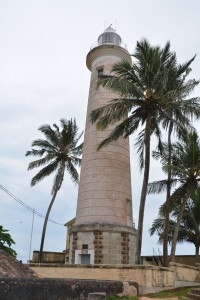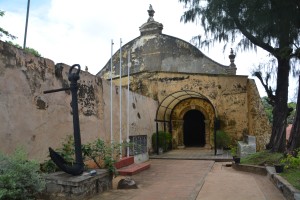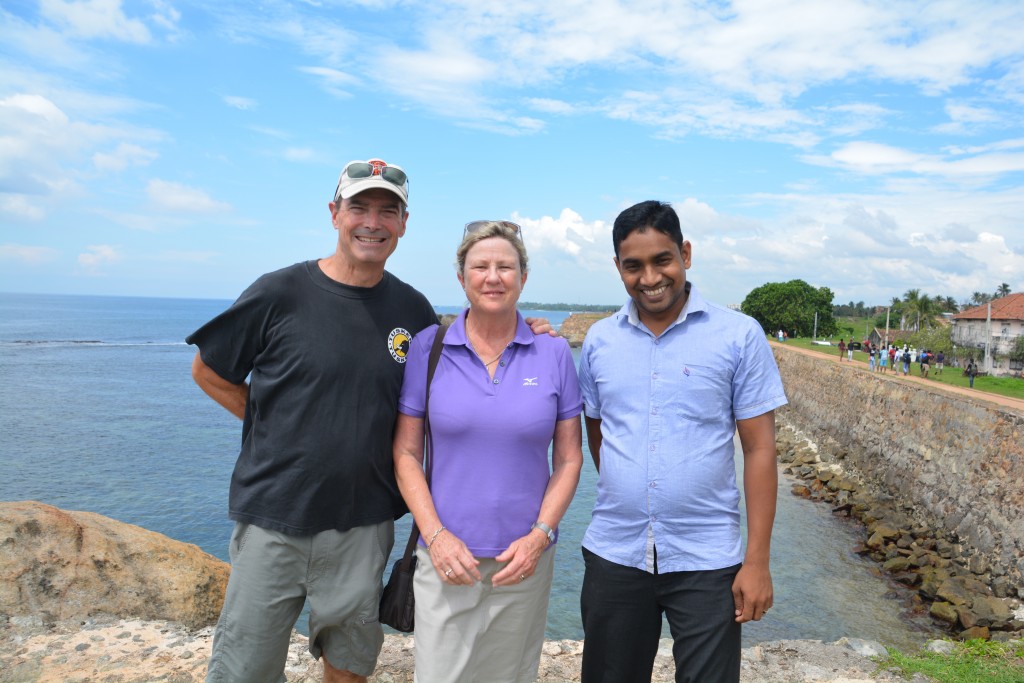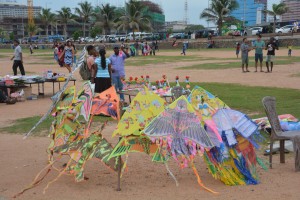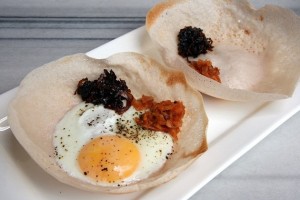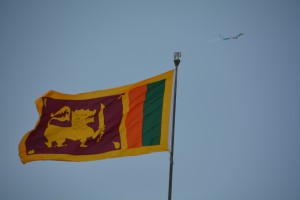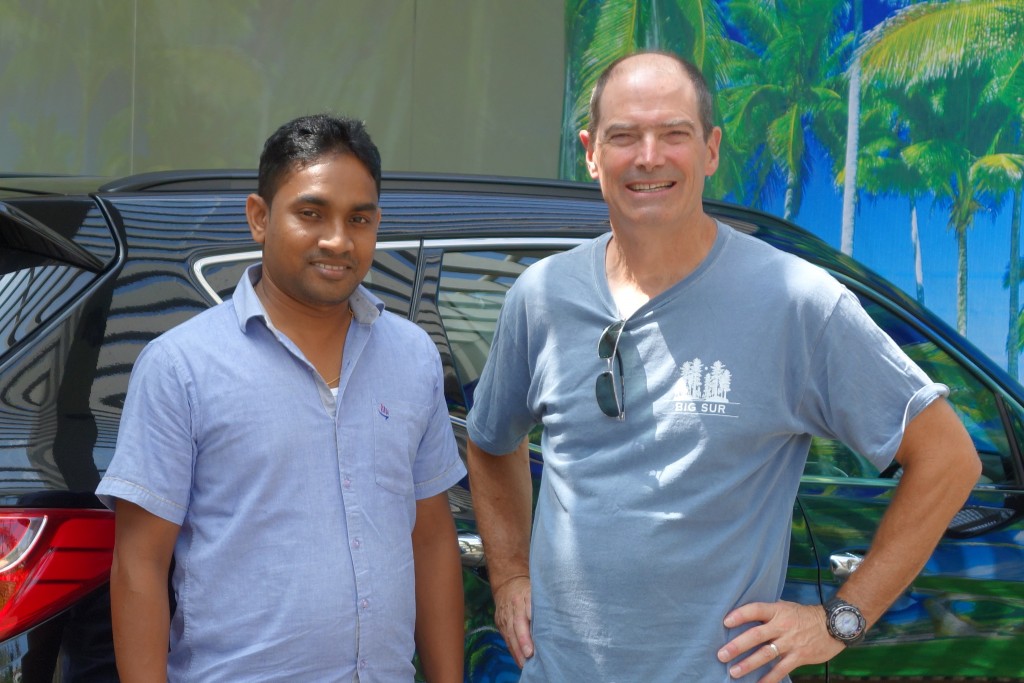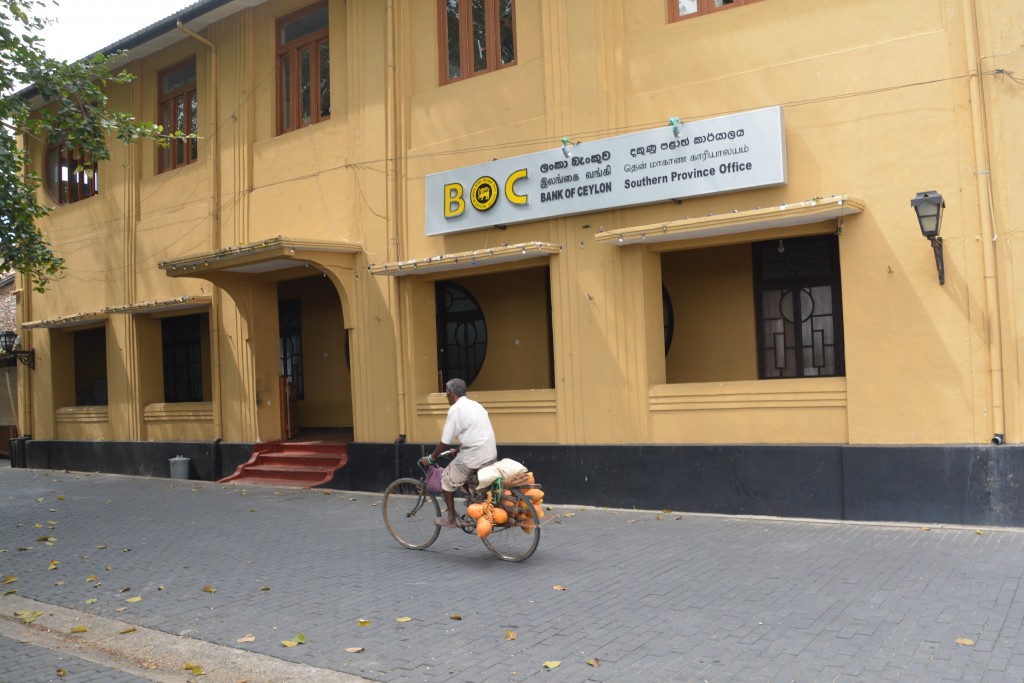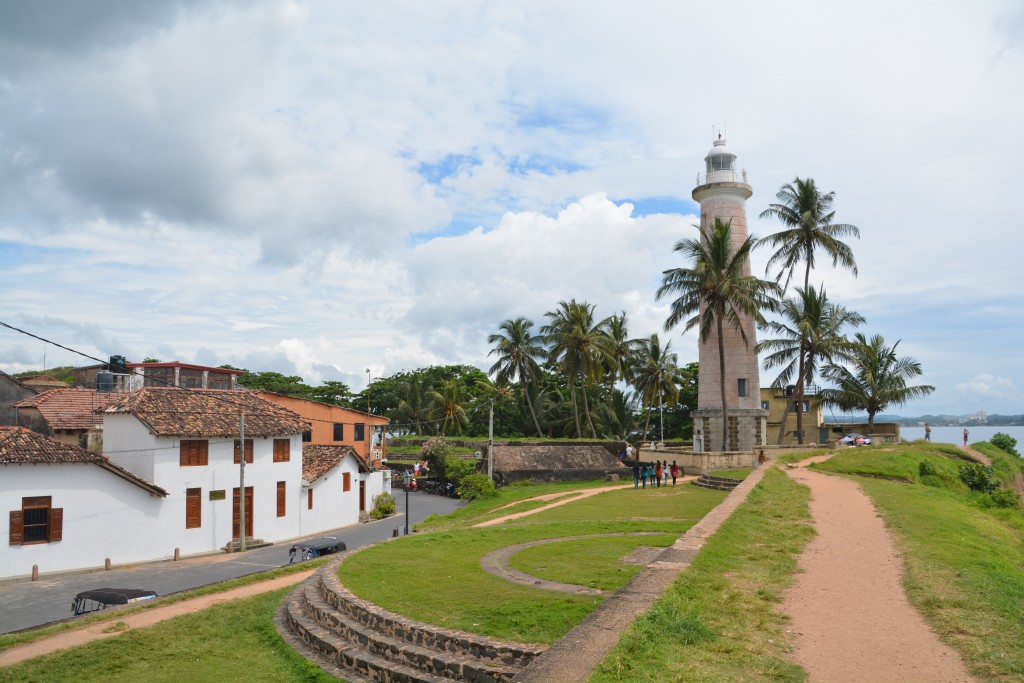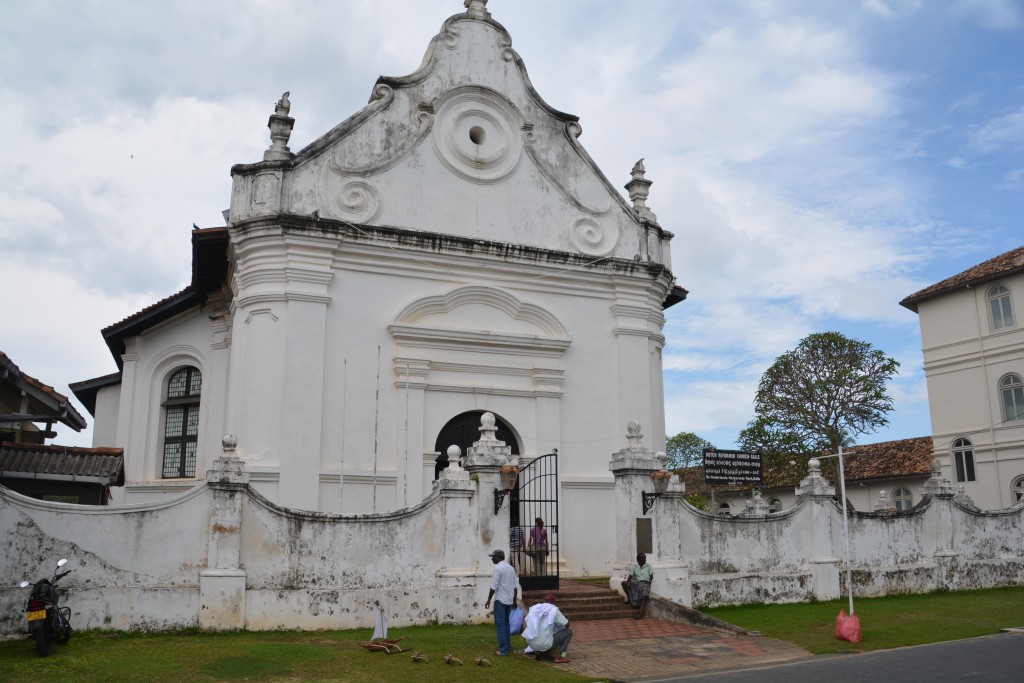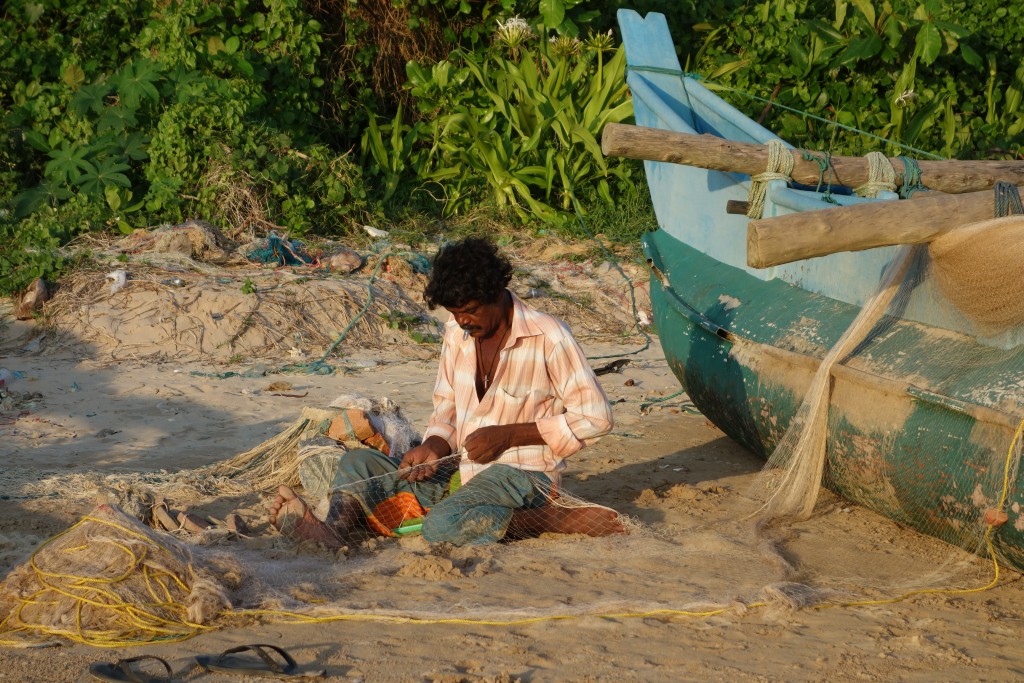Life and beaches after the tsunami
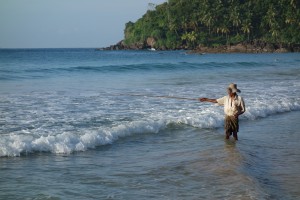
A lone fisherman tries his luck off the beach of Mirissa, one of the hardest hit places in the 2004 tsunami
On 26 December 2004 a 9.0 earthquake occurred off the coast of Sumatra in Indonesia. The tsunami that was created by this massive shift of tectonic plates on the ocean floor struck the coastlines of 14 different countries with devastating force, most fiercely felt in the Indonesia provinces of Aceh and North Sumatra. But as the 25 metre waves rolled westward the first obstacle they met was Sri Lanka and the impact on the coastal communities of this small agrarian country was unprecedented. Total loss of life in Sri Lanka has been estimated at more than 30,000 with up to a million people displaced. Even 11 years later the physical scars of that horrible event were still apparent, despite the beautiful beaches near some of the worst hit spots.
The small fishing and tourist town of Mirissa on the southwest coast was particularly hard hit by the tsunami with a loss of over 3,000 people from this village alone but they had shown remarkable resilience since then by rebuilding much of its modest tourist infrastructure and creating a beautiful place for visitors like ourselves to unwind for a few days. But even the casual observer could see the lasting impact those huge waves had on the local communities because of the shells of ruined buildings still standing in places, the new buildings that have been built since then and the infrastructure that still needs to be built to support the local villages.
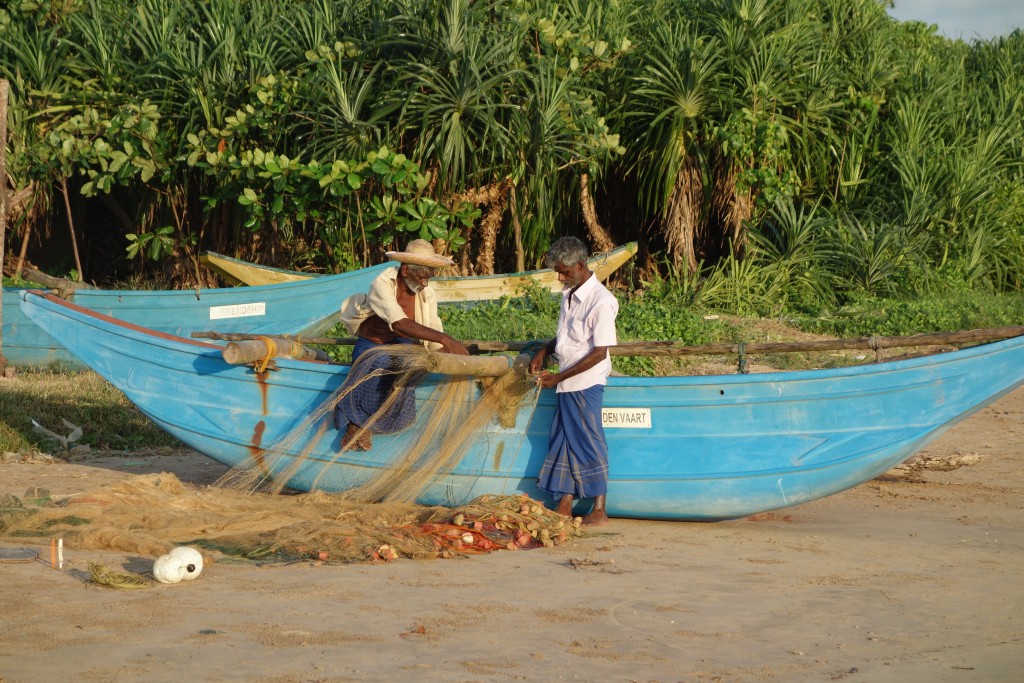
Dusk amongst the fishing boats on the beach – almost everyone in town lost loved ones in the tsunami
On our first afternoon in Mirissa we walked along the beach to the next village where dozens of narrow fishing boats were being prepared for another session at sea on the next high tide. We briefly talked to a youngish guy who was repairing his nets and he told us the story of how he lost his mother, two brothers and two sisters to the tsunami while he was out fishing in a large boat. Now he fishes for a living in a narrow one man boat and supports his father. There are probably thousands of these tragic stories up and down the coast but this guy is clearly trying to hang on and move on.
We stayed at the appropriately named Paradise Beach Hotel, right on the beach with an ample dose of paradise tossed in. Quality time was spent on our beach lounges under a few unsuspecting swaying palms in front of the long, clean and busy beach. There was plenty of time for reading, snoozing, swimming and general relaxing, not thinking about 2,000 year old ruins, train rides or leopards. At sunset we followed the beach down to the end of the point and found a few classic beach bars and restaurants where the tables sit in the sand and the Bob Marley look-alikes provide cold drinks and friendly banter. We had a couple of drinks as the sun disappeared and watched all the passersby from dozens of countries enjoy the beautiful long sandy beach, the gentle surf and the relaxing chill ambiance. We felt we were back in Thailand again.
Following the tsunami countries like Thailand and Maldives posted many signs warning about tsunami emergency alert signals and pointing directions to the highest nearby land (not that it will help much in Maldives where the highest land is one metre above sea level). But we saw no such warning signs along this coastline, no messages in the hotels, no evidence of planning for the future. Sri Lanka seems to be rolling the dice that it will never happen again.
But the southern coast of Sri Lanka is a paradise for beach goers, sun seekers, snorkelers, divers, whale watchers, sunset photographers and anyone who wants to chill out in one of the ultimate chill out places. Most of the beach side bars and restaurants feature friendly young locals with huge happy smiles that beckon you into their place for a cold Lion lager, a grilled fish or just a fun conversation. Its all very layback and cool.
One afternoon we walked over the steep headland to a little cove called Secret Beach where there was a small set of hidden bungalows and a couple of beach boys who hired us some snorkeling gear for a fun half hour snorkeling amongst the rocks, shoals, coral and sandy bits of this little hidden bay. The snorkeling wasn’t great, not much coral at all but we did see some colourful fish and enjoyed our time paddling around in the warm water.
The evenings featured cold beer, long beaches and stunning sunsets as the bright red orb sunk slowly into the Indian Ocean while local fishing boats filled the foreground. These sunset moments have been some of our best – rivaling those sunsets on Kamala Beach in Phuket or Broome or Weipa. Great stuff.
Our last day in Sri Lanka featured a visit to the old colonial fort town of Galle before reaching Colombo by late afternoon. But not so fast, there’s plenty to see and do along the way and we didn’t want to miss anything. The first stop along this chaotic coastal drive was to see the pole fishermen who sit up on a pole in the shallow surf for hours while waiting for an unsuspecting fish to wander by. This unique fishing technique is seen no where else in the world and is an iconic scene for Sri Lanka. These days the scene is hijacked by villagers who demand money for photos but in some places tourists are able to climb a pole and try their luck – or just pose for photos!
A couple of turns and we were in the colonial capital of Galle (pronounced Gawl) which was founded by the Portuguese in the 16th century, taken over by the Dutch in the 17th century, taken over again by the British in the 19th century and finally claimed as their own when the Sri Lankans gained sovereignty in 1948. Along the way the town gained an outstanding fort with its huge thick fortified walls protecting the original city out on the thin peninsula and a fantastic array of buildings that still exist, some going as far back to 1668.
The amazing thing about the fort of Galle is that it is still a thriving part of the city, full of administration offices such as the courts, churches, shipping lines, military offices and the like. Like almost every business inside the walls, they are housed in buildings that are hundreds of years old and it is a fantastic experience to walk along the narrow streets and enjoy the unique historic atmosphere. Of course most buildings now host tourist infrastructure such as hotels, hostels, restaurants, shops, arty centres and tourist rip off places, as you would expect.
Our highlight of Galle was to walk the fort’s ancient walls, or ramparts, and take in the beautiful Indian Ocean on one side while admiring the old buildings on the inside. This was great fun and we spent some time trying to imagine all the amazing things that must have happened within these walls over the centuries. And as an interesting side note, when the tsunami struck Galle the walls basically protected everything inside but redirected the force of the waves around the walls and accentuated the damage elsewhere, including the famous international cricket pitch which was obliterated by the storm.
Our last night in Sri Lanka was spent in its busy capital of Colombo, enjoying some of its modest highlights such as the Independence Monument with a statue of the country’s first prime minister and a strip of the coastline near the downtown area called the Galle Green Face.
This section of patchy green grass lined the waterway and provided direct views to the setting sun. From here thousands of Sri Lankan families were flying kites, playing with their toys and eating yummy snacks from the various food stalls. Young Sri Lankan couples, like we had seen just about everywhere, were glued together enjoying some important time together away from the prying eyes of their parents. Sri Lankans enjoying their city on a Saturday afternoon, just perfect.
But there was one unique Sri Lankan experience we still hadn’t been able to find and on this final night we were in search of the elusive hopper, a Sri Lankan national dish. Hoppers are sort of a rice pancake made very thin and quite plain until you add any sort of extra spice, egg or food into it. We eventually found this unique dish in a very basic little shop with a hopper maker in the front and a couple of basic tables in the back – very local. And there we had two plain hoppers and two egg hoppers with a nice dhal to add in. A great way to end our last day in Sri Lanka.
Sri Lanka exceeded all our expectations – fascinating ancient history, spectacular scenery, beautiful friendly people, great game parks and magnificent beaches. They’ve had their dark side also with the long civil war and the tsunami but they are resilient like no others and we think this will become one of the outstanding ‘go to’ travel destinations in the years to come. We hope to come back some day.

Panoramic view of Mirissa Beach, still quite undeveloped but almost certain to grow in popularity in the years to come
So here’s some of the things we liked about Sri Lanka –
- Sri Lankan ice cream
- Lion lager
- Young children with their huge brown eyes and smiles like a split coconut
- New roads with nice shoulders (most of the time)
- All motorcyclists wearing helmets
- The outstanding preservation of their 2,000 year old history
- Mirissa Beach
- The train ride to Ella
- Sirgiria (especially the walk up to the top)
- Hoppers
The list of things we didn’t like so much is fairly short but might include –
- Coffee (Nescafe instant is their high bar)
- The tragedy of the tsunami and its after-effects
- The locals who try to scam the tourists taking photos of the pole fishermen
- No sight of any leopards
